
| Publisher: | Farrar, Straus and Giroux | |
| Genre: | Magical Realism, Fairy Tales, Folk Tales, Legends & Mythology, Literary, Fiction | |
| ISBN: | 9780374602451 | |
| Pub Date: | April 2021 | |
| Price: | $28 |
| Fiction |
by Leone Ross
With her fourth book, Popisho, Leone Ross (Orange Laughter) delivers an enthralling and vivid portrait of a people and a place, brimming with love, politics, grief, addiction, sex, varicolored humor and some impossible flora and fauna. Inspired by Jamaica, where Ross grew up, the fictional archipelago of Popisho is home to peoples blessed by the gods with an extra-magical ability called cors, a "little something-something... so inexpressibly [their] own."
Xavier Redchoose's wife is dead. Weighted by guilt, he's pulling out of a year of immobilizing sorrow still wondering why her ghost has yet to return to him so that he can put her to rest in the traditional manner. As the current macaenus, his cors is the ability to "flavour food through the palm of his hands" and create for his diners a bespoke meal made "out of their feelings." There's an important feast to prepare, ingredients to hunt, but his wife isn't the only ghost preoccupying him as lost loves and old habits resurface.
Anise has "intimate comprehension of other people's bodies" and uses it to heal them. Even so, she can't stop the multiple miscarriages she suffers. Elsewhere, twins Sonteine and Romanza defy their powerful father to fight for both love and agency, and the marginalized indigenous people of the archipelago sense something has gone wrong with the islands and their communities.
Popisho is thick with imagery and memories, making it easy to miss that this engrossing 480-page story unfolds mostly over the span of one day. It is a wonder-filled and entertaining reflection on death, freedom, community and recovery. --Shannon Hanks-Mackey, editor and writer
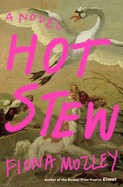
| Publisher: | Algonquin Books | |
| Genre: | Women, Urban & Street Lit, General, Literary, Fiction, LGBTQ+ | |
| ISBN: | 9781643751559 | |
| Pub Date: | April 2021 | |
| Price: | $26.95 |
| Fiction |
by Fiona Mozley
On a nondescript block in London's Soho district stands a 17th-century building with a decades-old French restaurant on the ground floor. The specialty of the house is snails in garlic butter. On the rooftop, two women bicker and smoke. In the cellar, an encampment of squatters scrapes out a home. On the middle floors, sex workers entertain clients in apartments where some of them also live. Myriad and motley, these characters and their sordid and sympathetic lives form Hot Stew, a compelling, compassionate novel by Fiona Mozley (Elmet).
Precious is an immigrant mother and grandmother. "Everyone assumes 'Precious' is the name she adopted on entering the trade," but it's her real name. She shares her apartment with her maid and life partner, Tabitha, retired from the trade. One of the brothel's customers, Robert, an older man retired from a life of crime, drinks at a nearby pub with his friend Lorenzo, a young actor. The pub is also frequented by two of the cellar squatters: a man who does magic tricks and a woman with a heroin problem and a mysterious past. A young man of wealth and privilege reconsiders old connections as he explores the Soho building that ties them all together. Looming dangerously over all their lives is the formidable Agatha Howard, who owns the building and wants to gut it for renovations to increase her profits.
Hot Stew is concerned with class, history, legacies, how each person ends up where they do and the degree to which they can determine their own futures. This is a novel of empathy, shared histories and hope in the most unlikely of places. --Julia Kastner, librarian and blogger at pagesofjulia
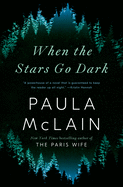
| Publisher: | Ballantine | |
| Genre: | Police Procedural, Mystery & Detective, Suspense, Thrillers, Fiction, Women Sleuths | |
| ISBN: | 9780593237892 | |
| Pub Date: | April 2021 | |
| Price: | $28 |
| Mystery & Thriller |
by Paula McLain
In a departure from her acclaimed historical fiction, Paula McLain (The Paris Wife; Circling the Sun) presents a literary thriller examining how a life can be reclaimed after unspeakable tragedy in When the Stars Go Dark.
San Francisco missing persons detective Anna Hart flees to her coastal hometown of Mendocino seeking solace and anonymity. Anna left her husband and job, but the specific cause of her grief is nebulous. Mendocino holds treasured memories of Anna's foster parents, but also of the unsolved murder of a friend when they were in high school. She arrives just as the town is reeling from another crime: a teenage girl, Cameron, is missing, apparently abducted.
Like Anna, Cameron had lost her biological family, and Anna is drawn to her plight: "All the scars I still carry, she carries, too." As Anna pursues the case with her old friend Will, now the town sheriff, they learn of another teenage girl who's been kidnapped, in nearby Petaluma. Here, McLain heightens the chilling tone of the novel with a true, high-profile 1993 abduction. Committed to finding Cameron, Anna thinks, "My mind believes she's gone forever. My heart can't accept that." The double mystery at the center of the tragedy enhances the story's suspense. A heart-stopping climax closes the case but can't relieve Anna's pain. Solace from an unexpected source leads her to confront her past, guiding her toward healing in a hopeful but realistic ending. Anna's sympathetic character and McLain's inclusion of true cases and procedurals make When the Stars Go Dark an immersive, propelling read. --Cheryl McKeon, Book House of Stuyvesant Plaza, Albany, N.Y.

| Publisher: | St. Martin's Press | |
| Genre: | Women, Family Life, Domestic, General, Suspense, Thrillers, Fiction, Siblings | |
| ISBN: | 9781250120953 | |
| Pub Date: | April 2021 | |
| Price: | $27.99 |
| Mystery & Thriller |
by Sally Hepworth
Sally Hepworth's ominous The Good Sister opens with an entry from the journal of Rose Castle, depicting a childhood camping trip during which her twin sister, Fern, did something horrific. After this unsettling introduction, the story jumps to the present, told from the point of view of Fern, now an adult working at a library. Fern is neurodiverse and content with her regimented life, which includes regular dinners with Rose. Fern's strict daily routines start unraveling when she meets an unusual man at the library and discovers Rose can't get pregnant. When Fern embarks on a plan to help Rose, she inadvertently sets in motion a series of events that unearth dark family secrets.
Hepworth proficiently spins a web that slyly keeps pulling in readers until they realize they're caught up in it and can't escape. The main draw is Fern, an endearing character who has no edit button and is very funny in the literal way she perceives social interactions. When a library patron says, "Excuse me," Fern replies, "You don't need to ask to be excused... you can come and go as you please." A potential lover asks, "Is it safe?" before they have sex and Fern thinks, "While it wasn't impossible a madman could burst into my flat at any given moment wielding a handgun, neither was my flat war-torn Syria." The relationship she forms with Wally, the man she meets at the library, will make most hearts grow three sizes, while this psychological thriller upends the notions of what makes someone "normal" and "good." --Elyse Dinh-McCrillis, blogger at Pop Culture Nerd

| Publisher: | Mulholland | |
| Genre: | Mystery & Detective, Crime, Hard-Boiled, Fiction, Noir | |
| ISBN: | 9780316703659 | |
| Pub Date: | April 2021 | |
| Price: | $26 |
| Mystery & Thriller |
by Jonathan Ames
Jonathan Ames has a soft spot for the man out of time, as his novels Wake Up, Sir! and The Extra Man attest. For A Man Named Doll, which is set in the present day, Ames has planted his lost man-boy narrator, ex-cop and private investigator Hank Doll, in a situation straight out of classic noir fiction--an inspired pairing given that Doll doesn't have a hard-boiled bone in his body.
The story opens at Doll's Los Angeles office with a visit from his getting-on-in-years friend Lou Shelton, who has a proposition: "I need a new kidney. I'm looking for volunteers." Shelton is offering big money, but that's not what convinces Doll to volunteer, free of charge: back when they were on the force, Shelton saved Doll's life. But before Doll can cough up the kidney, the old man shows up at Doll's house with a bullet in his chest and only minutes to live. So far, so noir.
A mysterious item that Shelton hands Doll just before he dies launches a one-man investigation in which classic crime motifs mingle amusingly with modern mores. Unlike vintage noir dicks, Doll doesn't suppress his emotions: he's been in Freudian analysis for years. And Doll reserves his pillow talk not for the dame who's crazy about him but for his dog, George, who will strike readers as something not unlike an emotional-support animal. With A Man Named Doll, Ames delivers a time-tripping white-knuckler with horror shadings, a noir soul and a tender heart. --Nell Beram, author and freelance writer
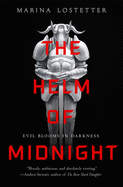
| Publisher: | Tor Books | |
| Genre: | Epic, Fantasy, Fiction, Action & Adventure | |
| ISBN: | 9781250757050 | |
| Pub Date: | April 2021 | |
| Price: | $26.99 |
| Starred | Science Fiction & Fantasy |
by Marina Lostetter
Marina Lostetter's The Helm of Midnight launches an exciting trilogy that combines the engrossing worldbuilding of epic fantasy with the disturbing thrill of hunting a serial killer. The novel opens with an intricately plotted heist--the theft of the death mask of the legendary murderer Louis Charbon. In one of Lostetter's many ingenious concepts, masks have the power to impart the skills and even the personality of the deceased to the mask's wearer. When victims are found carved into Charbon's signature "blooms," Krona Hirvath and her fellow Regulators must hunt down whoever is putting Charbon's mask to horrific use.
The Helm of Midnight shines in the way it plays with the traditional beats of a more conventional detective story. Krona plays the role of the investigator, hunting down clues and gradually piecing together a larger conspiracy. While Lostetter makes use of satisfying conventions, she shapes them to her highly idiosyncratic world full of enchanted stones, religious cults and the all-important masks. Lostetter also regularly leaves Krona to explore the central mystery from multiple angles and time periods, revealing the truth behind the murders to be far beyond a simple battle between good and evil.
The Helm of Midnight excels because the genre elements it borrows fit together organically. As the mystery unfolds, every reveal draws readers further into a highly original world, exposing secrets and injustice that go back to the mythical founding of their society. Lostetter has crafted an ingenious genre hybrid to introduce readers to her singular world. --Hank Stephenson, the Sun magazine, manuscript reader
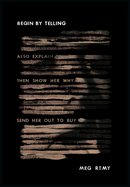
| Publisher: | Book*hug Press | |
| Genre: | Biography & Autobiography, Women, Music, Literary Collections, Essays | |
| ISBN: | 9781771666633 | |
| Pub Date: | March 2021 | |
| Price: | $20 |
| Biography & Memoir |
by Meg Remy
Meg Remy--prolific artist, Juno-nominated musician, frontwoman for the experimental pop group U.S. Girls--offers a spare, powerful memoir in Begin by Telling. A hybrid of multiple forms, it is a mosaic: memoir by vignettes and lists, in screenplay, through illustration and via quotes.
And it sears. Remy maintains tight control over the momentum, using white space and shifting forms as the heaviest revelations sting or linger. She alternately recalls deeply personal traumas and meditates on Western culture, the United States in particular, and issues affecting the world globally. So, as much as Begin by Telling feels personal, it also paints a broader portrait of a woman amid complicated social and economic structures and political systems: family, friendships, the (U.S.) legal system, patriarchy, white supremacy, capitalism--and the myriad manifestations of violence therein.
Control and choice are prominent themes. Remy asks: "How come The World Trade Center gets a big billion-dollar memorial and New York's Municipal Slave Market--prong genesis of America (no World Trade Center without it)--gets a plastic sign that must compete for space with a no-dog-poop signpost.... These are not arbitrary choices. There is no 'random' when it comes to violence or memorials." Other memorable topics: the Clinton impeachment, Desert Storm, the Indianapolis 500, jet fuel.
Among the many writers and thinkers Remy quotes is Sarah Schulman: "Shame, to me, is hiding information that reveals common human experiences, contradictions and mistakes." Throughout, Remy shares bravely--by choice. Her reckoning is incisive, painful and, readers will hope, healing. --Katie Weed, freelance writer and reviewer
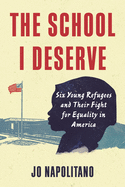
| Publisher: | Beacon Press | |
| Genre: | Education, Emigration & Immigration, Civil Rights, Student Life & Student Affairs, General, Educational Policy & Reform, Social Science, Political Science | |
| ISBN: | 9780807024980 | |
| Pub Date: | April 2021 | |
| Price: | $25.95 |
| Political Science |
by Jo Napolitano
Refugees in the United States often face multiple barriers to education: financial hardship, unfamiliar languages and confusing cultural practices. But as Jo Napolitano asserts in her compelling first book, The School I Deserve, young refugees can and should be given every chance to succeed. Napolitano, a veteran education reporter, recounts a landmark case in Lancaster, Pa., in which six refugees from various countries sued the school district for the right to attend McCaskey, the district's high-performing high school, instead of being shunted to Phoenix, a punitive alternative campus. Their courage would have far-reaching effects not only on their own lives, but for young refugees who came after them.
Napolitano--herself a Colombian immigrant who knew education was her key to a successful life--centers her story on two students: Khadidja Issa, from Sudan, and Mahamed Hassan, a Somalian refugee. Both of them, as well as the other plaintiffs in the case, had attempted to enroll at McCaskey in hopes of attending its well-regarded International School. But each of them met with resistance--sometimes in the form of outright lies from administrators who told them they were too old to enroll.
Weeks before the 2016 election, the young people and their lawyers argued their case in federal court. Napolitano weaves together the refugees' experiences with the broader trends of forced mass migration around the world, the squalid living conditions in refugee camps, and the complicated relationship between the U.S. and immigrants of all kinds. Meticulously researched and compassionate, The School I Deserve is a fierce defense of refugees' right to a quality education. --Katie Noah Gibson, blogger at Cakes, Tea and Dreams

| Publisher: | Bloomsbury | |
| Genre: | Literary Criticism, General, Literary Collections, Essays | |
| ISBN: | 9781526621900 | |
| Pub Date: | April 2021 | |
| Price: | $28 |
| Essays & Criticism |
by Jenny Diski
When the English writer Jenny Diski learned that she had inoperable cancer in 2014, her distress at the prospect of dying was rivaled by her fear that her life would play out as a cliché: "The future flashed before my eyes in all its pre-ordained banality." Diski (1947-2016) spent her career as a writer of fiction and nonfiction avoiding clichés, and readers can be assured that Why Didn't You Just Do What You Were Told?, a collection of 33 of her incisive and pugnacious essays for the London Review of Books, is a bromide-free zone.
Diski wrote withering social criticism and had an outsize talent for distilling discomforting truths. On the sinking of the Titanic: "It was, of course, a gift for those who saw disaster in modernity." On Charles and Diana's split: "Take the bright lights away and you have a regular messy divorce, friends taking sides, money, adultery, using the kids. The only remarkable thing was that he left her for an older woman." Readers of Why Didn't You Just Do What You Were Told? who are new to Diski's work will be awed not just by her die-cut sentences but also by the range of her apparent authority.
The thread linking all these pieces, which span 1992 to 2014, is Diski's personal history, which comprised a harrowing childhood ("I came from a family of suicidal hysterics") and intermittent mental health problems. How she managed regularly to self-disclose without toggling over into self-absorption is a secret that she has taken to her lamentably early grave. --Nell Beram, author and freelance writer

| Publisher: | University Press of Kentucky | |
| Genre: | Women Authors, Family, Poetry, Subjects & Themes | |
| ISBN: | 9780813181158 | |
| Pub Date: | April 2021 | |
| Price: | $19.95 |
| Starred | Poetry |
by George Ella Lyon
Through the 46 moving poems in Back to the Light, George Ella Lyon takes readers on a journey with her.
The specificity with which she re-creates a moment in each--whether noticing a third-grader at one of her school visits, or the moment at age five when an older boy sexually assaults her, or the way a stone she finds puts her in mind of Virginia Woolf's suicide--adds up to a cumulative epiphany by the collection's end, and offers an overriding sense of hope.
In the first poem, Lyon (Which Side Are You On?) confides to readers about "writing as a way/ to connect with your inside self, your story." She follows with a poem about the breath, then a musing on what it might be like if the body could "trade places with the head," using homonyms to haunting effect: "To steel yourself/ is/ to steal yourself." Lyon answers the unspoken question (steel yourself against what?) with the poem "Out with It," in which she describes how she "left my body to survive/ He was twelve, he was twelve/ I was five." Other poems explore how, labeled a liar by her mother, this girl of five retreats in "Trapdoor," and then how music and poetry--the experience of singing and writing and listening--slowly return her to herself.
With the final lines, Lyon has brought readers full circle, to a place of wholeness, imparting her hard-won wisdom and paving the way for all to connect with their "inside self." --Jennifer M. Brown, senior editor, Shelf Awareness
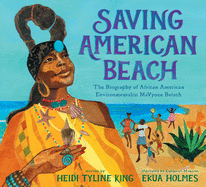
| Publisher: | Putnam | |
| Genre: | Biography & Autobiography, Environmental Conservation & Protection, Science & Nature, Social Activists, United States - General, History, Juvenile Nonfiction | |
| ISBN: | 9781101996294 | |
| Pub Date: | April 2021 | |
| Price: | $17.99 |
| Starred | Children's & Young Adult |
by Heidi Tyline King, illust. by Ekua Holmes
In this inspirational picture book, Heidi Tyline King and Ekua Holmes introduce readers to African American environmentalist MaVynee Betsch (1934-2005), who left an acclaimed career in opera to save the beach her family built.
When MaVynee was a girl, she and her family were unable to enjoy the neighborhood beach as freely as they wanted because of segregation. Her great grandfather decided to buy a beach of his own where all were welcomed: American Beach, on Amelia Island, Fla. "In no time, American Beach was hopping." MaVynee eventually became a successful opera singer. When her mother got sick, she returned to the beach and discovered it in ruin. After her mother died, she dedicated her life first to the beach's rejuvenation and second to protecting it from builders: "She drew a line in the sand. MaVynee was saving more than a beach." After years of writing letters and quarreling with officials, others joined her fight and legislation was passed to save American Beach.
Debut picture book author King's engaging text gracefully pairs with Coretta Scott King Illustrator Award Winner and Caldecott Honoree Ekua Holmes's acrylic and collage illustrations. Holmes (The Stuff of Stars; Out of Wonder) captures MaVynee as a caretaker and advocate, and her use of bright colors and handmade stamps elevate MaVynee's special way of paying homage to her beach: adorning her seven-foot-long mane with colorful seashells and pins. Back matter includes notes from King and Holmes both encouraging readers to do something positive for the world. --Kharissa Kenner, children's librarian, Bank Street School for Children
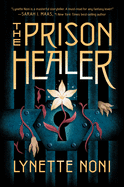
| Publisher: | HMH Books for Young Readers | |
| Genre: | Survival Stories, Epic, Dark Fantasy, Fantasy, Romance, General, Young Adult Fiction, Action & Adventure | |
| ISBN: | 9780358434559 | |
| Pub Date: | April 2021 | |
| Price: | $18.99 |
| Children's & Young Adult |
by Lynette Noni
This tense fantasy series opener set in a death prison is a dark story of survival, rebellion and purpose.
Seventeen-year-old Kiva and her healer father arrived at Zalindov, a prison "full of murderers and rebels," 10 years ago. When her father died, she took on his job as the prison healer. Now, the Rebel Queen has arrived at Zalindov and Kiva is commanded to keep the deathly ill woman alive long enough to fulfill her punishment: the insurmountable "Trial by Ordeal," reserved for the most dangerous criminals. In order to succeed, the Rebel Queen must complete four elemental tasks (Ordeals) that are "inspired by magic of old." Slipped in with the queen's clothes, Kiva finds a coded message from her free family members: "Don't let her die. We are coming." When the queen fails to improve in time for her trial, Kiva volunteers in her place--she hopes to buy her family time and survive the impossible tasks, winning both her and the queen their freedom.
In The Prison Healer, Lynette Noni (Whisper) doesn't shy away from the brutality of prison life at Zalindov, showing all its grim and gruesome parts. Whether it's inmates bullying each other, debilitating labor or guards sexually and physically abusing prisoners, her characters suffer greatly. However, Noni aptly softens this harsh reality with budding romance, sweet friendships and soothing memories. Through Kiva's perspective, readers are privy to her deceased father's voice in flashbacks, which helps provide background and is also a much-needed source of comfort and hope. The action comes in waves until the end when Noni slams readers with plot twists, reveals and a jaw-dropping final cliff-hanger. --Lana Barnes, freelance reviewer and proofreader
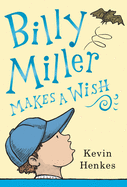
| Publisher: | Greenwillow Books | |
| Genre: | Emotions & Feelings, Humorous Stories, General (see also headings under Social Themes), Family, Social Themes, Juvenile Fiction | |
| ISBN: | 9780063042797 | |
| Pub Date: | April 2021 | |
| Price: | $16.99 |
| Children's & Young Adult |
by Kevin Henkes
Strike up the band: the star of The Year of Billy Miller is back. In the equally winning Billy Miller Makes a Wish, Kevin Henkes gives his now eight-year-old protagonist a gently humorous new story line, as well as fresh worries to go with it.
When Billy wishes that "something exciting would happen" while he's blowing out the eight candles on his birthday cake, he doesn't mean that he wants his neighbor, Mr. Tooley, to die. Billy's dad assures him that the 92-year-old's death had nothing to do with Billy's birthday wish, but it's hard for the kid not to feel responsible. And when a previously undetected bat suddenly swoops around the Millers' basement--more excitement--Billy has to wonder: "Did he have some strange new power?"
Throughout a career that has generated dozens of books, Henkes has become children's literature's Mr. Rogers: for Henkes, feelings are the big story. Billy Miller Makes a Wish sees the child through not just guilt but also possessiveness (with his new birthday markers), embarrassment (he learns that his parents used to exchange love letters) and missing someone (Billy's dad spends a few days at art camp). Henkes's intermittent black-and-white thumbnails--as of Billy's sister Sally's broken animal erasers--reinforce the primacy of small things in the lives of children navigating a world scaled for adults. --Nell Beram, freelance writer and YA author